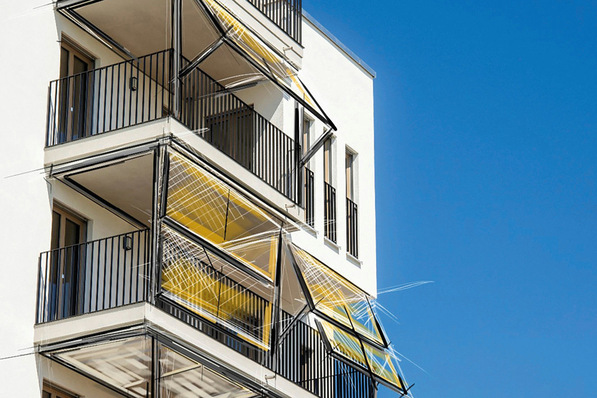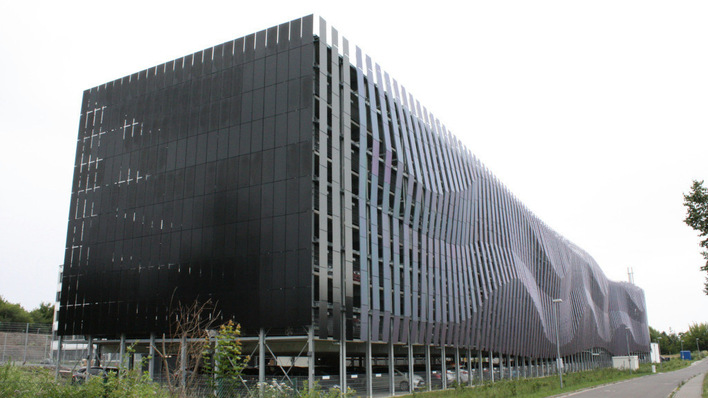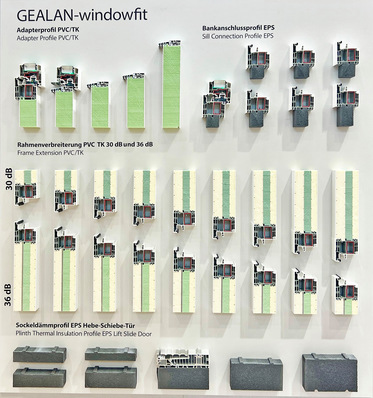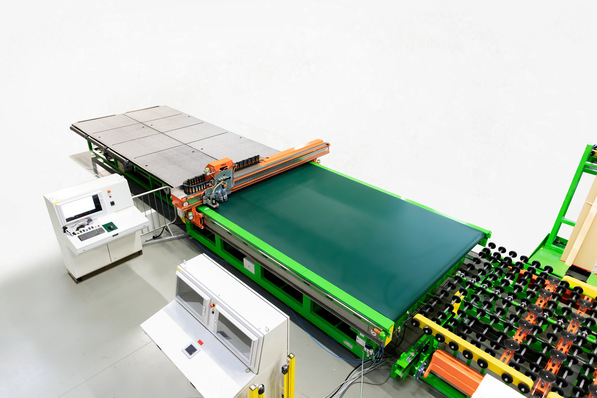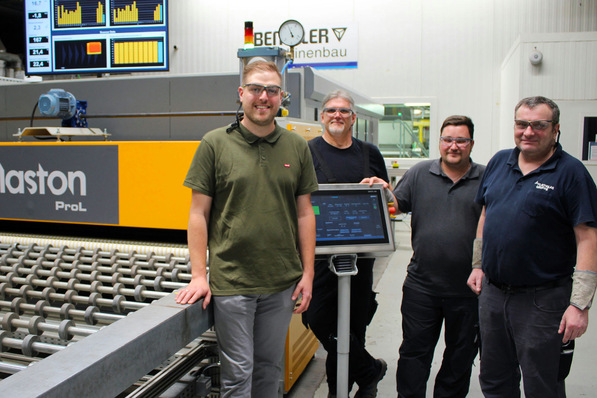The listed sandstone museum building from 1910 dominates the cityscape and, together with the cathedral, forms a cultural centre in the city of Speyer in Germany. In recent years, however, events in the inner courtyard of the Historical Museum have been limited because the old glass roof was leaking.
Today, thanks to effective solar control glass, the courtyard area can once again be used without restriction. “The decisive factor for the type of roofing was the column-free usability of the courtyard, with special consideration given to the historic building fabric and monument protection,” says architect Thomas Langendorf.
Solarlux glass roof in use
Solarlux A61 with a Ug value of 1.0 W/m²K was used for the glass construction – a high-performance glass roof system that combines energy efficiency with design appeal. With a total area of 845 square metres, an impressive, column-free glass structure was created – 321 square metres of the glass was finished with a differentiated digital print.
The outer glass pane of the glass consists of 8 mm thick ESG-HST safety glass. For Isolar partner Hunsrücker Glasveredelung Wagener, it was important to find a solution that took both functional and design considerations into account in line with the historic surroundings: “With the A61, we were able to use a modern system that also blends harmoniously into the existing structure,” says Bojan Gvozdarevic from Hunsrücker Glasveredelung Wagener.
“The glazing should not only be accessible for maintenance and cleaning, but also match the original building as closely as possible – especially because of the concept of night cooling and ventilation,” explains Bojan Gvozdarevic from Hunsrücker Glasveredelung Wagener.
Glass surfaces with digital printing of transparency levels ranging from 0 to 85 per cent create a specific temperature gradient under the roof. This causes movement of air masses, by which warm air can be discharged to the outside via the roof flaps.
How the glass roof meets the highest energy requirements
The sun protection glass used, with its special coating, reflects radiant heat and acts like a mirror. This makes the temperature under the roof feel significantly higher than it actually is, a noticeable gain in comfort that also saves heating energy.
In summer, on the other hand, the roof plays a key role in preventing overheating. The intricately printed grid in the glass provides effective sun shading – without any moving parts. This meant that maintenance-intensive shading systems were not required, while still maintaining a pleasant indoor climate.
Precision above the roofs of Speyer
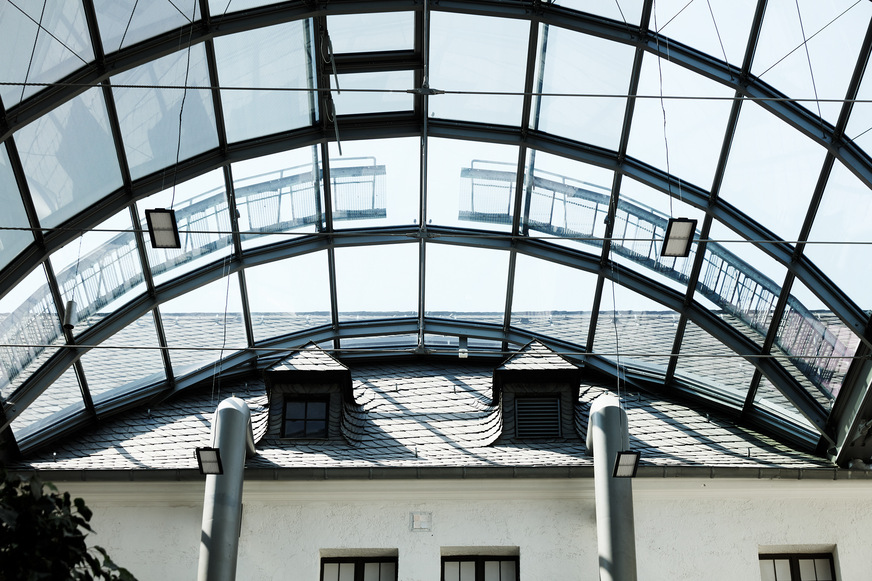
Isolar
The construction work was challenging. The roof rises to a height of up to 17 m – a real challenge, especially in the central area with its barrel roof geometry.
Working at this height required extreme precision, especially in the barrel-shaped roof sections, where every millimetre counts. The project was further complicated by a steel primary structure that was outside the specified tolerance.
Only through the development and installation of a precisely coordinated secondary substructure was it possible to professionally install and permanently seal the glass structure. “Without this intermediate step, the long-term tightness of the system would not have been guaranteed,” says Bojan Gvozdarevic. This required not only technical expertise, but also close coordination with all project participants.
Sophisticated logistics
Logistics also posed major challenges for the installation team: in the middle of Speyer's old town, the construction site area was very limited. There was hardly any space available for traditional storage and manoeuvring.
“All transport had to be carried out using a gantry crane – that was the only practical solution,” says Bojan Gvozdarevic. Well-planned material management was essential.
In addition, it was necessary to react quickly when the weather turned bad: “Every evening, the roof areas that were still open were provisionally covered with tarpaulins. This was a measure that required extreme care and daily discipline.”
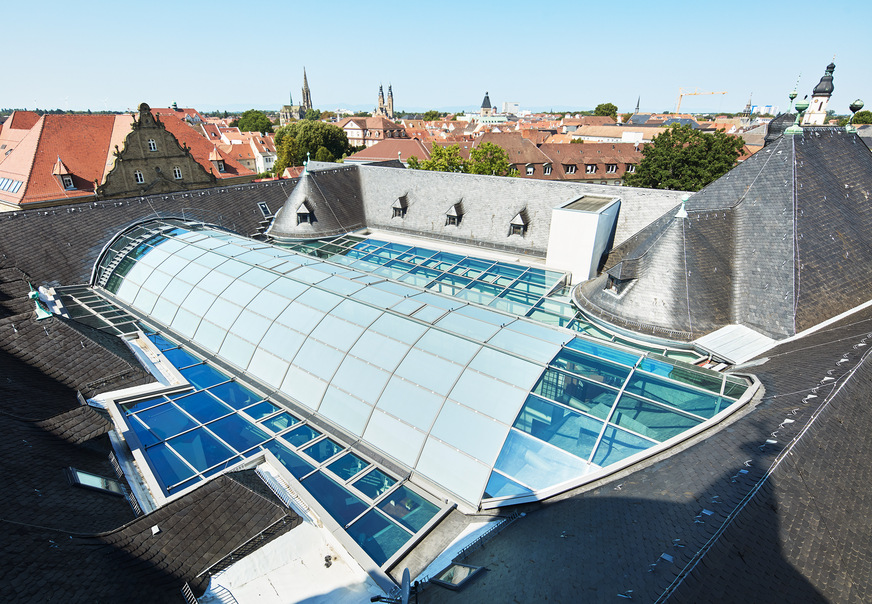
Isolar









